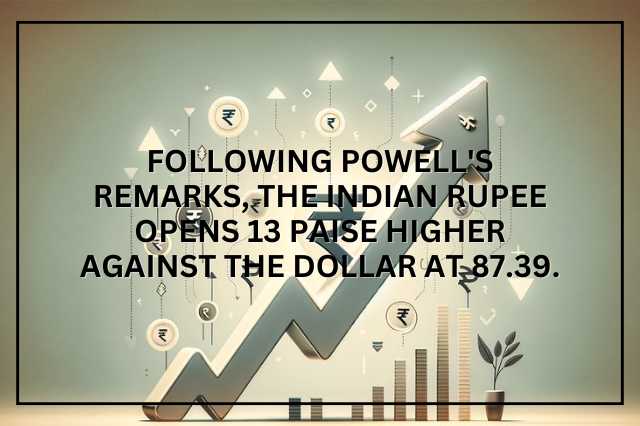
loading...

Following Powell's remarks, the Indian rupee opens 13 paise higher against the dollar at 87.39.
In contrast to its previous closing of 87.5275 against the US dollar, the Indian rupee began 13 paise higher on August 25 at 87.2950. Compared to 98.62 the week before, the dollar index, which gauges the strength of the US dollar relative to a basket of six major currencies, dropped to 97.88 in early trading. Anil Kumar Bhansali, Head of Treasury and Executive Director at Finrex Treasury Advisors LLP, stated, "The dollar index recovered by roughly 0.22% from the previous session after dropping sharply last week due to the FED signal of Potential Rate Cut." The dollar index increased to 97.89 on August 25, 2025. After the US Fed chair hinted at a rate cut in September, the dollar index weakened. Jerome Powell, the chair of the US Federal Reserve, said on Friday indicated the central bank will proceed slowly as it continues to assess the effects of tariffs and other measures on the economy, without providing any indication as to when a rate decrease would occur. Powell stated that there are dangers of both persistently increasing inflation and rising unemployment in a well-publicized speech that was widely followed on Wall Street and at the White House. The Fed would normally lower its short-term rate to encourage hiring while maintaining or increasing it to combat inflation, so this puts it in a difficult position.<br><br><br> The Indian rupee began the session on August 25 with a gain of 13 paise, opening at 87.29 against the US dollar compared to its previous close of 87.52. The movement came as the dollar index slipped to 97.88 in early trade from 98.62 a week earlier, following dovish remarks from US Federal Reserve Chair Jerome Powell. His cautious stance on interest rates created optimism in emerging market currencies, including the rupee. Powell emphasized that the Fed would carefully monitor economic indicators such as inflation and employment before deciding on rate cuts. While he refrained from providing a timeline, his comments hinted at a possible September rate reduction. This ambiguity has caused some volatility in the global currency markets but has also weakened the dollar, providing short-term relief to the rupee. Market experts suggest that the rupee is likely to benefit from the softening dollar, as well as stable capital inflows and manageable crude oil prices. However, they also warn that external risks remain. Persistent inflation in the US, geopolitical uncertainties, or any reversal in foreign investment flows could quickly offset the gains seen in the domestic currency.
Just Login and Customize
Our Features Easily.
USERNAME : [email protected]
PASSWORD : admin1234